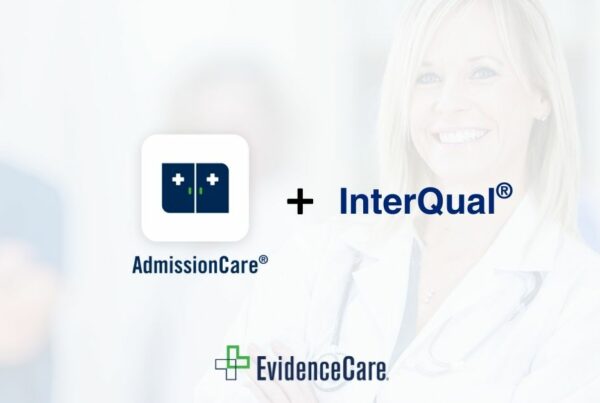This comprehensive guide provides hospital and revenue cycle leadership with vital insights on preparing for CERT audits and establishing processes for compliant documentation.
From understanding the audit requirements to implementing technology for streamlined admission documentation, this article offers actionable strategies to ensure hospitals are well-prepared for the rigorous evaluation process. It addresses common challenges and highlights the importance of accurate and thorough medical necessity documentation, equipping leaders with the knowledge needed to navigate the intricacies of CERT audits effectively.
Understanding the Requirements of CERT Audits
CERT audits require hospitals to adhere to stringent guidelines and practices to ensure compliance with regulatory standards. This section delves into the specific criteria and expectations set by CERT audits, emphasizing the need for meticulous attention to detail and documentation accuracy.
Regulatory Standards
CERT (comprehensive error rate testing) is a program administered by the Centers for Medicare & Medicaid Services (CMS) that utilizes Recovery Audit Contractors (RACs) to review medical records and identify potential billing errors. The RACs are the ones conducting the audits. While CERT audits adhere to broad federal regulations, specific details can vary depending on the program and payer or program involved (e.g. Traditional Medicare vs. Medicare Advantage vs commercial insurance).
There can also be state variations with additional regulations regarding documentation and coding requirements that layer on top of federal guidelines. Hospitals need to be aware of these state-specific rules as well.
However, hospital revenue cycle teams can still be prepared by focusing on core federal regulations that underpin CERT audits. Here are some key areas to consider:
-
- Medicare & Medicaid guidelines: Familiarize yourself with the latest versions of Medicare & Medicaid documentation and coding manuals, paying close attention to medical necessity criteria for specific diagnoses and procedures.
- HIPAA regulations: Ensure patient privacy is protected throughout the documentation process.
- Federal Anti-Kickback Statute (AKS) & Stark Laws: These regulations prohibit financial incentives that could influence physician decision-making regarding patient care. Proper documentation helps demonstrate services were ordered based on medical necessity, not financial gain.
Documentation Accuracy
We can’t stress enough the importance of accurate and thorough medical necessity documentation, especially when it comes to CERT audits. Think of your documentation as the ironclad defense for your hospital admissions. Clear, concise records that demonstrate the necessity for inpatient care are the key to surviving a CERT audit unscathed.
Without proper documentation justifying the level of care provided, even the most legitimate admissions can be flagged for improper coding and denied reimbursement. This can lead to significant financial losses for the hospital.
Investing in robust documentation practices not only protects your revenue stream but also ensures patients receive the appropriate level of care and minimizes the risk of unnecessary denials that could impact their wellbeing. With the high-stress pressure of CERT audits, accurate documentation is your best friend.
How to Measure Compliance
The healthcare industry is turning a keen eye towards compliance measures as a significant KPI, aiming to ensure patients are placed into the correct bed status. A compliance measure calculates the percentage of patients discharged in the appropriate inpatient or observation bed status—a determinant that can result in major financial repercussions if misclassified.
EvidenceCare has developed a compliance KPI for its clients using its bed status software, AdmissionCare. The goal for the compliance measure is to have over 95% of discharges compliant.
With denials and downgrades often occurring retrospectively, the tracking of these incidents becomes crucial in assessing compliance. This deep dive into precision and accuracy at discharge is critical in curbing the negative financial impact due to post-admission audits.
Attributing ROI to Compliance and Quality of Data
A more advanced idea is the attribution of Return on Investment (ROI) to compliance measures. By assigning a dollar value to the avoidance of denials and downgrades, healthcare providers can appreciate the direct economic benefit of precise bed status placements.
This creates a dual positive impact: additional revenue and reduced administrative workload.
So what’s the best way to assign a dollar value to avoid denials?
EvidenceCare established that preventing claim denials upfront is a more effective strategy than simply reacting to them later. Hospitals shouldn’t stick to the traditional “follow-up method” that prioritizes a high clean claim rate (claims submitted without internal edits) and instead recommend proactive denial prevention.
As researched by OS Inc., “If the cost of denials at XYZ Healthcare is around $75 per denied claim, and they submit 20,000 claims per month, it is likely that around 4,000 of those claims will deny (based on a 20% initial denial rate). This amounts to a cost of about $300,000 every month or $3.6 million in a single year!”
90% of denials are preventable. By using data on denial trends to identify areas for improvement, such as clinician education and/or technology for better documentation or staff training for accurate patient information collection, organizations can achieve significant financial benefits like improved cash flow, reduced write-offs, and shorter payment cycles.
A survey by Premier found that hospitals spend nearly $20 billion annually appealing denied claims, with an average denial rate of 15% and a cost of almost $44 per claim. This process is lengthy, taking an average of three review rounds and delaying payments up to six months, which hurts both hospitals’ finances and patient satisfaction.
Breakdowns in tracking downgrades and denials can cause substantial financial losses. Dispelling the notion that high inpatient percentages are unequivocally favorable, denials based on medical necessity or lack of authorization reveal a more nuanced picture. This illustrates the important distinction between observation and inpatient status and how these classifications tie directly into revenue outcome and compliance.
A three-month lag for denial data to surface points towards a need for more proactive approaches. A proactive stance can catch potential downgrades earlier. By acknowledging retrospective downgrades and denials, healthcare systems can preempt major financial hits from audits, as these errors are often difficult and costly to correct once billing has proceeded.
The implementation and tracking of specific KPIs can aid in circumventing cost-intensive denials. When considering how to present this data, it’s good to keep in mind that there is a complex interplay between clinical decision-making, data accuracy, and compliance, revealing a system that is both intricate and highly sensitive to data quality and usage.
Training Staff for Successful CERT Audits
To ensure hospitals are prepared for CERT audits, a strong foundation in accurate and complete documentation is essential.
Here are some tips for better documentation:
-
- Standardization: Develop and implement standardized documentation templates for admissions, history and physicals, progress notes, and discharge summaries. This ensures consistency and reduces the risk of missing crucial information.
- Medical Necessity: Train staff to clearly document the medical necessity for each admission. This includes justifying the level of care (inpatient vs. outpatient) and all services provided.
- Completeness and Accuracy: Educate staff on the importance of complete and accurate documentation. This includes recording all relevant patient information, diagnoses, procedures, medications, and test results.
- Timeliness: Emphasize the importance of timely documentation. Ideally, records should be completed as close to the point of care as possible to minimize errors and improve recall.
Successful documentation relies heavily on collaboration and clear communication between clinical and revenue cycle staff.
Here are ways to help foster that environment:
-
- Interdepartmental Training: Facilitate training sessions that involve both clinical and revenue cycle staff. This fosters a shared understanding of documentation requirements and ensures clear communication between departments.
- Physician Engagement: Actively engage physicians in the training process. Their understanding of medical necessity and coding helps ensure documentation reflects the true nature of the patient’s condition and treatment plan.
- Open Communication Lines: Establish open communication channels where staff can ask questions and receive clarification on documentation procedures.
CERT audits can be stressful for staff unfamiliar with the process.
Here are some best practices for preparing the team:
-
- Mock Audits: Conduct periodic mock audits to identify areas for improvement and familiarize staff with the audit process. This helps reduce anxiety and allows staff to practice their responses.
- Regulatory Updates: Regularly update staff on the latest regulatory guidelines and coding requirements, including any changes to Medicare or Medicaid documentation standards.
- Resource Library: Develop a resource library for staff with access to relevant documentation templates, coding manuals, and CMS guidelines. This allows for easy reference and ongoing learning.
Beyond the core training elements, several additional strategies can further strengthen a hospital’s defense against potential CERT audit findings:
-
- Continuous Monitoring: Implement a system for monitoring and auditing internal documentation practices to identify and address any recurring issues.
- Incentivize Accuracy: Consider incentive programs to recognize staff who consistently maintain high-quality documentation.
- Invest in Technology: Explore technology solutions that can streamline documentation processes and improve coding accuracy.
By implementing these best practices, hospitals can empower their staff and significantly improve their chances of success during CERT audits. Remember, a well-trained and informed staff is one of the best ways to ensure proper documentation and minimize financial risks associated with CERT audits.
Implementing Technology for Streamlined Admission Documentation
Technology plays a pivotal role in optimizing admission documentation processes for CERT audit readiness.
Computerized Physician Order Entry (CPOE) Systems: CPOE systems can prompt physicians with order sets and documentation templates tailored to specific diagnoses and procedures. This standardization reduces errors and ensures essential information is captured consistently.
Clinical Documentation Improvement (CDI) Software: CDI software can analyze patient medical records and identify potential documentation gaps or inconsistencies. This allows for real-time feedback and prompts for additional information during the point of care, improving the completeness and accuracy of records.
Coding Compliance Software: Coding compliance software can review coding decisions and identify potential errors or inconsistencies with current guidelines. This proactive approach helps minimize the risk of incorrect coding, a frequent target during CERT audits.
Natural Language Processing (NLP) Tools: NLP technology can analyze physician notes and automatically extract relevant data for populating medical records. This can save time, improve efficiency, and minimize errors caused by manual data entry.
Admission Criteria Software: AdmissionCare by EvidenceCare can streamline the admission process by giving admitting physicians the bed status criteria in the EHR at the point of care and automating the documentation within the medical record. This allows clinicians to focus on the clinical aspects of the admission process and ensures accurate capture of appropriate inpatient vs observation documentation upfront, reducing the likelihood of errors or missing information that could trigger scrutiny during a CERT audit.
By strategically incorporating technology solutions like those mentioned above, hospitals can significantly enhance the quality of their documentation, improve coding accuracy, and empower staff to navigate CERT audits with greater confidence.
To get a customized demo of AdmissionCare for your hospital, schedule with us today!
Get the latest research and insights on medical necessity denials, compliant documentation, and best practices from leading health systems. Download our new research report “Cracking the Code: A Data-Driven Guide to More Revenue and Less Denials”.
Frequently Asked Questions (FAQs) about CERT Audits
-
- What is a CERT audit, and why is it important? A CERT audit, or Comprehensive Error Rate Testing audit, is conducted Recovery Audit Contractors (RACs) by the Centers for Medicare & Medicaid Services (CMS) to measure the accuracy of claims payments. It helps identify billing errors and improper payments, ensuring compliance with Medicare billing regulations. Adhering to CERT audit requirements is crucial for healthcare providers to maintain financial integrity and regulatory compliance.
- What triggers a CERT audit? CERT audits are triggered by various factors, including anomalies in billing patterns, high denial rates, coding discrepancies, and random selection by CMS. Additionally, certain billing codes or procedures may be flagged for review based on historical error rates or emerging trends identified by CMS.
- How can healthcare providers prepare for a CERT audit? Healthcare providers can prepare for CERT audits by implementing robust documentation practices, ensuring compliance with Medicare billing regulations, conducting internal audits to identify potential areas of non-compliance, and staying informed about regulatory updates and changes. Utilizing technology solutions such as EvidenceCare’s AdmissionCare can also streamline admission documentation and improve documentation accuracy, enhancing readiness for CERT audits.
- What are common challenges faced during CERT audits? Common challenges during CERT audits include incomplete or inaccurate documentation, coding errors, lack of medical necessity justification, insufficient supporting documentation, and failure to adhere to Medicare billing guidelines. Addressing these challenges requires comprehensive documentation practices, staff training, and the use of technology solutions to ensure compliance with audit requirements.
- What are the potential consequences of failing a CERT audit? Failing a CERT audit can have significant financial implications for healthcare providers, including recoupment of overpayments, monetary penalties, reputational damage, and increased scrutiny from regulatory agencies. It can also lead to heightened compliance monitoring and additional audit activities, potentially affecting the provider’s eligibility to participate in Medicare and Medicaid programs.
- What steps should be taken if a healthcare provider receives a CERT audit request? Upon receiving a CERT audit request, healthcare providers should promptly gather the requested documentation, ensure completeness and accuracy of records, review billing codes and procedures for compliance with Medicare guidelines, and collaborate with internal stakeholders and legal counsel as needed. It’s essential to respond to the audit request within the specified timeframe and cooperate fully with auditors to facilitate a thorough review of the documentation.
- How can healthcare providers prevent CERT audit findings in the future? Healthcare providers can prevent CERT audit findings by implementing proactive measures such as ongoing staff training and education, continuous monitoring of documentation practices, conducting regular internal audits, and leveraging technology solutions for streamlined documentation and coding accuracy. By fostering a culture of compliance and accountability, healthcare providers can mitigate audit risks and maintain regulatory compliance over time.










